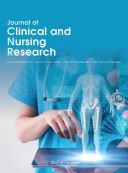Abstract
Diesel poisoning is a rare clinical condition. On September 27, 2021, a 55-year-old male who mistakenly inhaled 20 mL of diesel through a siphon was admitted to our hospital. The main symptoms were cough and asthma. Chest computed tomography (CT) showed both lungs scattered with patchy consolidation, ground-glass shadow, exudation, and pleural effusion. After 61 days of lung rehabilitation training and other supportive treatment, including oxygen therapy, postural drainage, ventilator support, bronchoalveolar lavage, hemoperfusion, continuous renal replacement therapy (CRRT), hormones, and antibiotics, the patient’s condition improved, and the patient was discharged. Through literature review, we found that lung consolidation, ground-glass shadow, nodular lesions, and pleural effusion can be observed on chest images of patients with lipoid pneumonia, with severe cases showing diffuse lesions involving both lungs, possibly secondary to respiratory failure. Children with acute critical illness deteriorates rapidly and have poor prognosis, whereas adults or patients with chronic poisoning have better prognosis after active treatment.
References
Clément M, Benattia A, Meignin V, et al., 2021, Exogenous Lipoid Pneumonia Due to Chronic Occult Aspiration in a Patient with Oesophageal Colonic Interposition. BMJ Case Reports, 14(6): e244324.
Shimizu T, Nakagawa Y, Iida Y, et al., 2020, The Diagnosis of Exogenous Lipoid Pneumonia Caused by the Silent Aspiration of Vegetable Oil Using a Lipidomic Analysis. Intern Med, 59(3): 409–414.
Cha SI, Choi SH, Kim HJ, et al., 2019, Clinical and Radiological Manifestations of Lipoid Pneumonia According to Etiology: Squalene, Omega-3-Acid Ethyl Esters, and Idiopathic. Clin Respir J, 13(5): 328–337.
Marchiori E, Zanetti G, Mano CM, et al., 2011, Exogenous Lipoid Pneumonia. Clinical and Radiological Manifestations. Respir Med, 105(5): 659–666.
Nord KE, Haupt D, 2005, Reducing the Emission of Particles from a Diesel Engine by Adding an Oxygenate to the Fuel. Environ Sci Technol, 39(16): 6260–6265.
Mccreanor J, Cullinan P, Nieuwenhuijsen MJ, et al., 2007, Respiratory Effects of Exposure to Diesel Traffic in Persons with Asthma. New England Journal of Medicine, 357(23): 23–48.
Sun Y, Bochmann F, Nold A, et al., 2014, Diesel Exhaust Exposure and the Risk of Lung Cancer – A Review of the Epidemiological Evidence. Int J Environ Res Public Health, 11(2): 1312–1340.
Leong WC, Cheong BM, 2017, Siphoning Diesel: A Fatal Mistake. Med J Malaysia, 72(5): 314–315.
Srinivasa MA, Das S, Bheemanathi HS, 2018, Fatal Diesel Poisoning: A Case Report and Brief Review of Literature. Am J Forensic Med Pathol, 39(2): 169–172.
Petrescu IO, Co?oveanu CS, Popa A, et al., 2016, Fatal Evolution in the Pneumonia Caused by Diesel Fuel Aspiration – Case Report. Curr Health Sci J, 42(3): 293–297.
Prasad KT, Dhooria S, Bal A, et al., 2017, An Unusual Cause of Organizing Pneumonia: Hydrocarbon Pneumonitis. J Clin Diagn Res, 11(6): OD03–OD04.
Shi Y, Cheng Z, 2017, A Case of Exogenous Lipoid Pneumonia Caused by Diesel Inhalation and Literature Review. Journal of Clinical Pulmonology, 22(08): 1527–1530.
Li S, Zhang X, 2020, Diesel Aspiration Pneumonia: A Case Report and Literature Review. Clinical Medical Research and Practice, 5(07): 3–4.
Wu Y, Han T, Zhang X, 2019, A Case of Hydrocarbon Pneumonia Complicated with Respiratory Failure Caused by Diesel Inhalation and Literature Review. Chinese Journal of Clinicians, 47(10): 1183–1187.
Jia J, Jian X, Han J, et al., 2018, A Case of Aspiration Pneumonia Caused by Diesel Aspiration. Chinese Journal of Occupational Health and Occupational Diseases, 36(01): 65.
Zhong X, Ding A, Zhao L, et al., 2019, A Case Report of Diesel Aspiration Pneumonia. Journal of Clinical Pulmonology, 24(03): 568–569.
Hara M, Iwakami SI, Sumiyoshi I, et al., 2018, Hydrocarbon Pneumonitis Caused by the Inhalation of Wood Preservative. Respirol Case Rep, 6(9): e00379.
Lococo F, Cesario A, Porziella V, et al., 2012, Idiopathic Lipoid Pneumonia Successfully Treated with Prednisolone. Heart Lung, 41(2): 184–187.
Ishimatsu K, Kamitani T, Matsuo Y, et al., 2012, Exogenous Lipoid Pneumonia Induced After Aspiration of Insecticide. J Thorac Imaging, 2012(27): 18–20.
Sen V, Kelekci S, Selimoglu Sen H, et al., 2013, An Evaluation of Cases of Pneumonia That Occurred Secondary to Hydrocarbon Exposure in Children. Eur Rev Med Pharmacol Sci, 17(1): 9–12.
Russo R, Chiumello D, Cassani G, et al., 2006, Case of Exogenous Lipoid Pneumonia: Steroid Therapy and Lung Lavage with an Emulsifier. Anesthesiology, 104(1): 197–198.
Steele RW, Conklin RH, Mark HM, 1972, Corticosteroids and Antibiotics for the Treatment of Fulminant Hydrocarbon Aspiration. JAMA, 219(11): 1434–1437.
